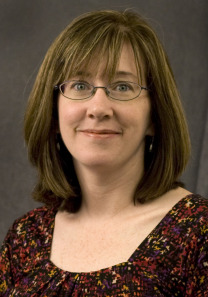AMES, Iowa – Dementia is a difficult and complex diagnosis. Unlike cancer or heart disease, dementia is a terminal illness that often goes undiagnosed and is difficult to treat. As a result, families struggle with how to care for and help a loved one maintain their independence as the disease progresses.
One challenge families face is knowing where to turn for help, said Jennifer Margrett, an associate professor of human development and family studies and director of the gerontology program at Iowa State University. To ensure Iowans get the help they need, ISU is partnering with the Iowa Department on Aging (IDA) and the Iowa Alzheimer’s Association to improve access to dementia-capable services.

The research team will focus specifically on LifeLong Links, a resource center for older Iowans and Iowans with disabilities, administered by IDA. Many home and community-based dementia services are underutilized because Iowans don’t know the programs exist or how to access them, Margrett said. Additionally, services aren’t always accessible in rural areas. As a result, persons with dementia are often placed in long-term care facilities instead of receiving the care they need at home, she said.
“There is a lack of awareness throughout our communities. As people age, they, their families, and the people they interact with aren’t prepared to think about needs, especially related to dementia. We’re not talking about it and we’re not preparing,” Margrett said. “Another problem is the fragmentation of services that are in place. This partnership and evaluation is a way to help coordinate and shore up those gaps, so people do know where to turn for help.”
Iowa has the country’s second largest population living in nursing homes, according to a 2013 study by the Henry J. Kaiser Family Foundation. That same study ranked Iowa fourth in long-term residents, with low-care needs that could be met at home. More than 90 percent of Iowans aged 50 and older want to stay in their own homes -- or age in place -- for as long as possible, according to an AARP study. However, the previous statistics would indicate that is not the reality for many older Iowans.
LifeLong Links is in the early stages of implementation in Iowa and accessible by phone (866-468-7887), online (www.lifelonglinks.org) or by visiting a local coordination center. The program is designed to be a one-stop resource for information and referrals to guarantee people do not fall through the cracks. Joe Sample, a Ph.D. student in human development and family studies who is working with Margrett on the project, said the three-year study will provide a roadmap to grow the program.
“Our goal is to really test the system,” said Sample, who also works for IDA. “In a way, this is a new product to deliver services and we want to get it right from the beginning, so we don’t have to fix it later.”
Shifting population leaves few to care for older adults
The out migration of younger adults and families to urban areas creates an even greater burden in caring for older adults living in rural areas. This study is part of Margrett’s ongoing efforts to examine “care deserts” in Iowa, or areas where residents have limited access to resources for independent living. The Centers for Disease Control estimates that by 2025, Iowa will see an 18 percent increase in the number of older adults with Alzheimer’s disease. Because of the lack of home and community-based services in rural areas, many of these adults are living longer, but not necessarily living well, Margrett said.
“As people are planning for retirement and older age, they should start thinking about what services are available, if needed, and being more preventative as well,” Margrett said. “It’s an issue of whole person wellness. We need to be thinking about and practicing good principles earlier in life, to have a higher quality of life as we age.”
The challenges associated with rurality are not unique to Iowa – labeled as one of 20 gray states, in which population proportions among those 50 and older make it among the oldest in the country. In 14 of those gray states at least half of the counties are designated as rural, according to the USDA Economic Research Service.
Helping older adults age in place is not only beneficial for the individual’s well-being, but it also means a significant cost savings for the state. The amount of Medicaid dollars needed to support one person in a skilled nursing facility is equal to the resources needed to support three people using home and community-based services, according to a 2011 report by the AARP Foundation, the Commonwealth Fund and the SCAN Foundation. Over the course of the three-year study, Iowa State researchers will make recommendations to help Iowans access these services and programs.

